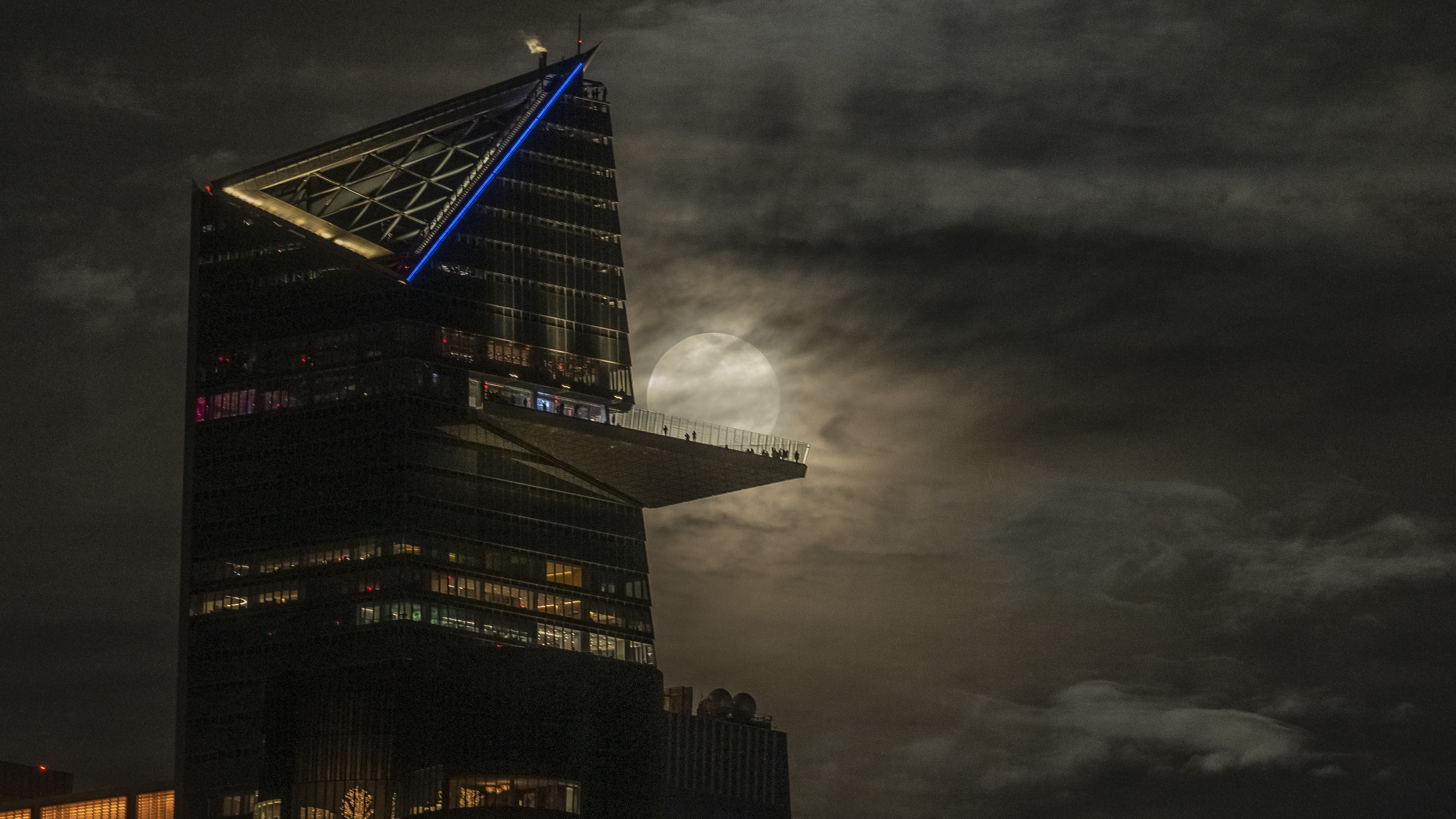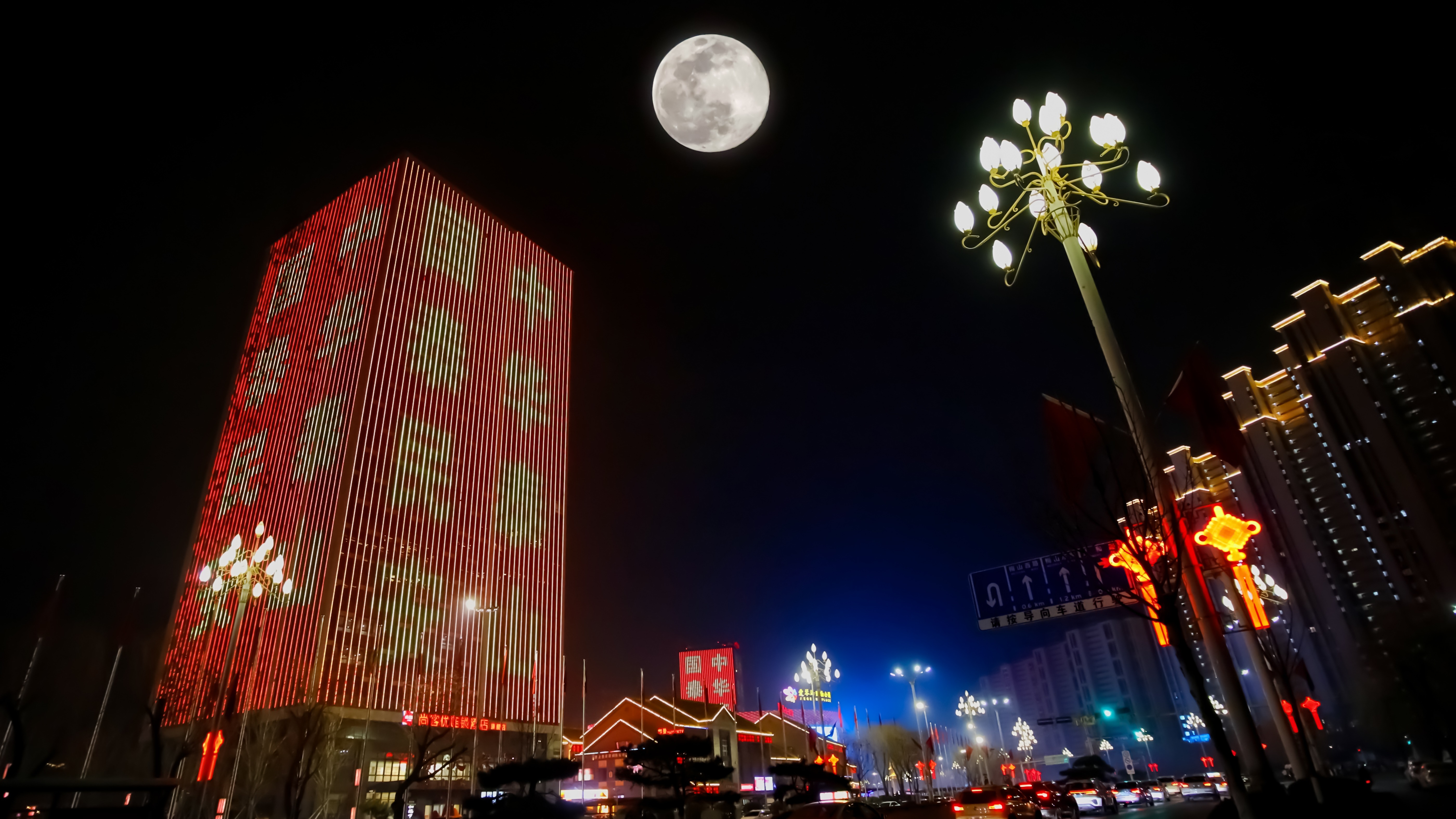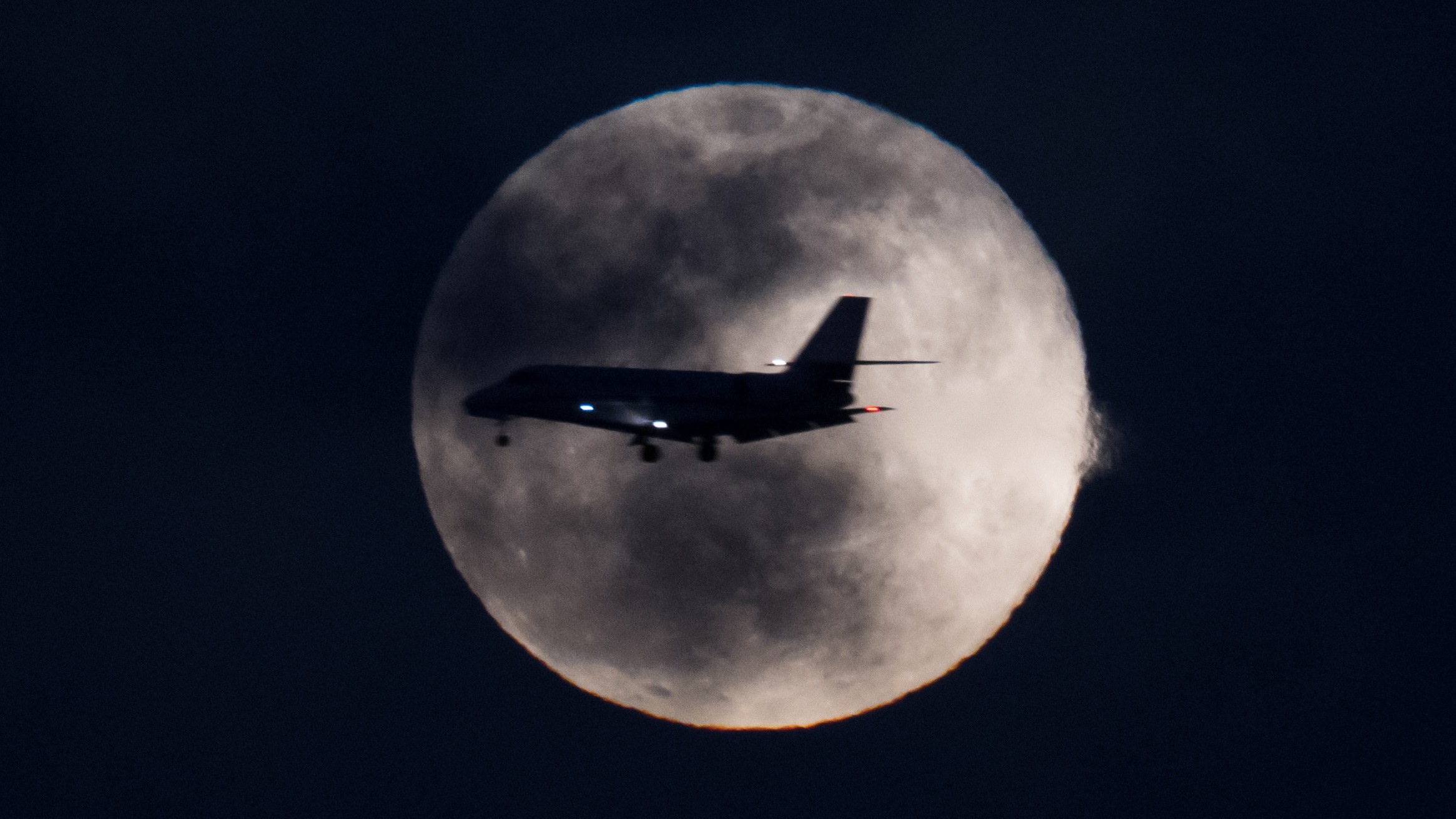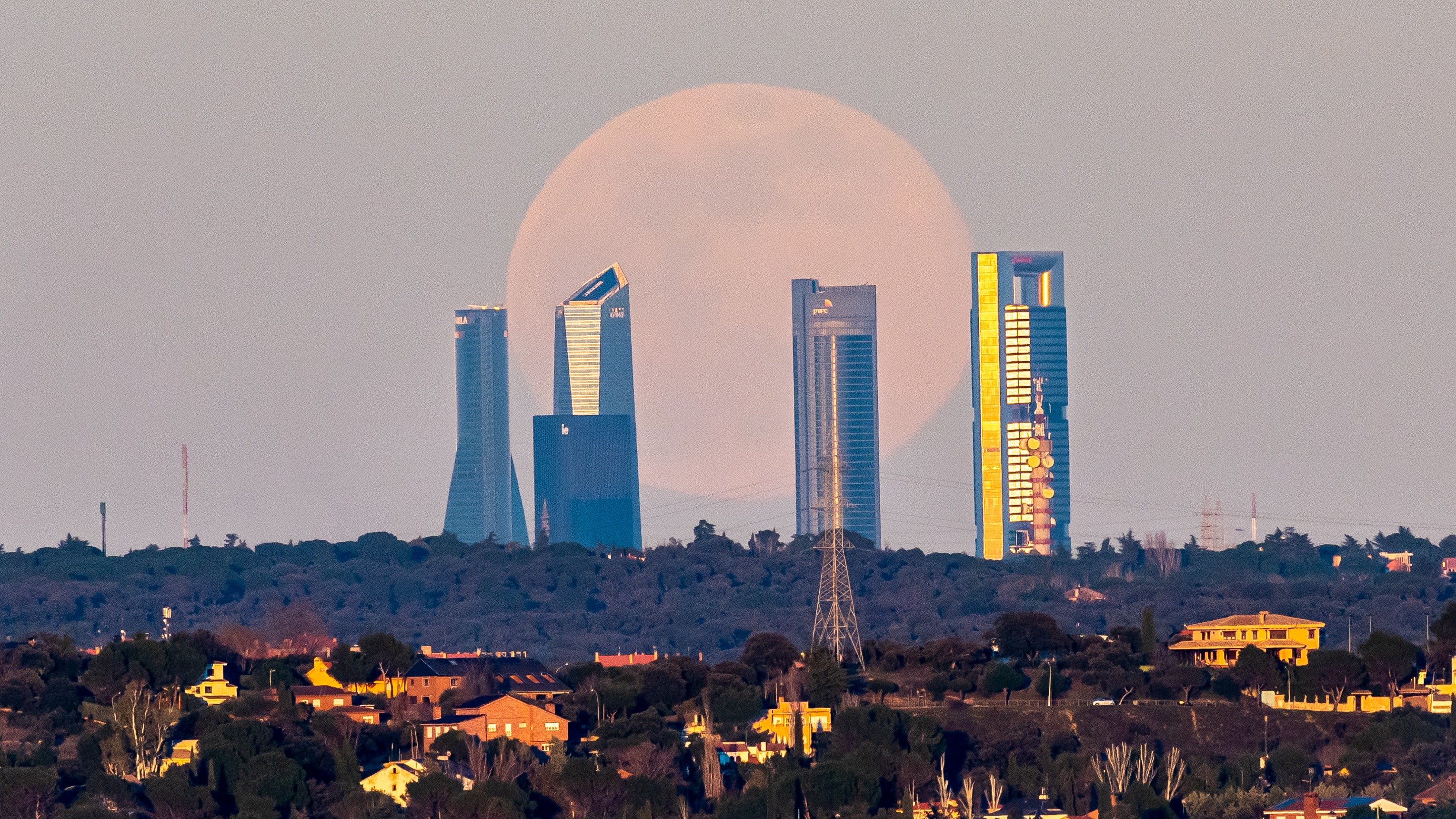Full Snow Moon, the smallest 'micromoon' of 2023, dazzles winter stargazers
Stargazers across the world, as well as celebrants of China's Lantern Festival, hailed the arrival of the full snow moon in pictures.

The full moon of February shone in stunning photos across the world.
From celebrants of China's Lantern Festival that honored the first full moon of the Chinese new year, to astronauts on the International Space Station, the full Snow Moon turned heads and shone in photos despite being the smallest "micromoon" of 2023.
The full moon of February, called the Snow Moon in some Native American cultures, occurred in the eastern U.S. at 1:28 p.m. (1828 GMT) on Sunday (Feb. 5), per the U.S. Naval Observatory. In New York City, the was visible at 5:10 p.m. — about eight minutes before sunset, meaning it was visible at the same time in the sky as the sun.
Related: February full moon 2023: The Snow Moon rises with Jupiter, Mars and Orion

Want to see the next full moon up close? We recommend the Celestron Astro Fi 102 as the top pick in our best beginner's telescope guide. Don't forget a moon filter!
If you're looking for a telescope or binoculars to observe the next full moon, our guides for the best binoculars deals and the best telescope deals now can help. Our best cameras for astrophotography and best lenses for astrophotography can also help you prepare to capture the next skywatching sight on your own.
Fancy taking a more in-depth moonlit tour of our rocky companion? Our ultimate guide to observing the moon will help you plan your next skywatching venture whether it be exploring the lunar seas, mountainous terrain, or the many craters that blanket the landscape. You can also see where astronauts, rovers and landers have ventured with our Apollo landing sites observing guide.
The Full Snow Moon was the smallest full moon of the year due to the distance from Earth the moon was at in its orbit around our planet. Called a "micromoon," the Full Snow Moon of February was the opposite of a supermoon and was up to 14% smaller than the moon at its largest extent. Most observers, however, were unable to see the difference.
Breaking space news, the latest updates on rocket launches, skywatching events and more!
The annual Lantern Festival in China, in other Asian countries, and in communities around the world celebrated the arrival of the moon, the first of the Chinese Year of the Rabbit. The festival honors deceased ancestors during Yuan, the first month of the lunar calendar, according to Encyclopedia Britannica.
Astronauts on the ISS spotted the moon quite easily. "The sight of the full moon rising from the pale blue atmosphere seen from the ISS is breathtakingly beautiful," wrote Koichi Wakata, an astronaut with the Japanese Aerospace Exploration Agency (JAXA), on Twitter. (Translation from Japanese provided by Google.)
ISSから見える薄く青い大気層から満月が昇って行く光景は息を呑むような美しさです。今週も頑張って行きましょう! pic.twitter.com/KDuMzCI3dTFebruary 5, 2023
Astrophotographers in the U.S. and other countries spotted the Full Snow Moon and captured footage of our neighbor shining in the sky.
My shot of the 2023 Snow moon, with the hidden colors of the mineral revealed. This 148 megapixel shot was captured using two telescopes and two cameras to present the scene in extreme fidelity. pic.twitter.com/aNfmBiO4lcFebruary 5, 2023
february’s snow moon. pic.twitter.com/oEukLYBx0hFebruary 6, 2023
Tonight’s full moon over Mussenden Temple. Only peeked out from behind the clouds for a few minutes but it was worth standing in the cold for! Happy #snowmoon everyone! #fullmoon pic.twitter.com/kaajU4msXWFebruary 5, 2023
February’s Snow Moon setting over the Fens and the magnificent @Ely_Cathedral this Sunday morning 💜🌝💙 #snowmoon #fullmoon pic.twitter.com/pRSbqLbybjFebruary 5, 2023
Empire State Building under a full moon; NYC. pic.twitter.com/OGn03sI54fFebruary 6, 2023
Tonight's #fullmoon #SnowMoon rising over the New Orleans West End lakefront area tonight pic.twitter.com/qyUqhmzDu9February 6, 2023
February's Full Moon occurs tonight at 18:28 GMT. 🌕This Full Moon is known as Snow Moon, but other names for it include ‘Hunger’ and ‘Storm’ Moon. 🌨️📸 @mattaveryuk pic.twitter.com/HkpFIXbrurFebruary 5, 2023
The full #SnowMoon this evening in #rutland #fullmoon pic.twitter.com/pI4OndrCd1February 5, 2023
It’s #FullMoon Monday!!!! pic.twitter.com/8lk6uS4AMpFebruary 6, 2023
Fullmoon of February 2023❄️ pic.twitter.com/74cvK4C43PFebruary 6, 2023
Editor's Note: If you snap a photo of the moon and would like to share it with Space.com's readers, send your photo(s), comments, and your name and location to spacephotos@space.com.
Elizabeth Howell is the co-author of "Why Am I Taller?" (ECW Press, 2022; with Canadian astronaut Dave Williams), a book about space medicine. Follow her on Twitter @howellspace. Follow us on Twitter @Spacedotcom or Facebook.

Elizabeth Howell (she/her), Ph.D., was a staff writer in the spaceflight channel between 2022 and 2024 specializing in Canadian space news. She was contributing writer for Space.com for 10 years from 2012 to 2024. Elizabeth's reporting includes multiple exclusives with the White House, leading world coverage about a lost-and-found space tomato on the International Space Station, witnessing five human spaceflight launches on two continents, flying parabolic, working inside a spacesuit, and participating in a simulated Mars mission. Her latest book, "Why Am I Taller?" (ECW Press, 2022) is co-written with astronaut Dave Williams.





